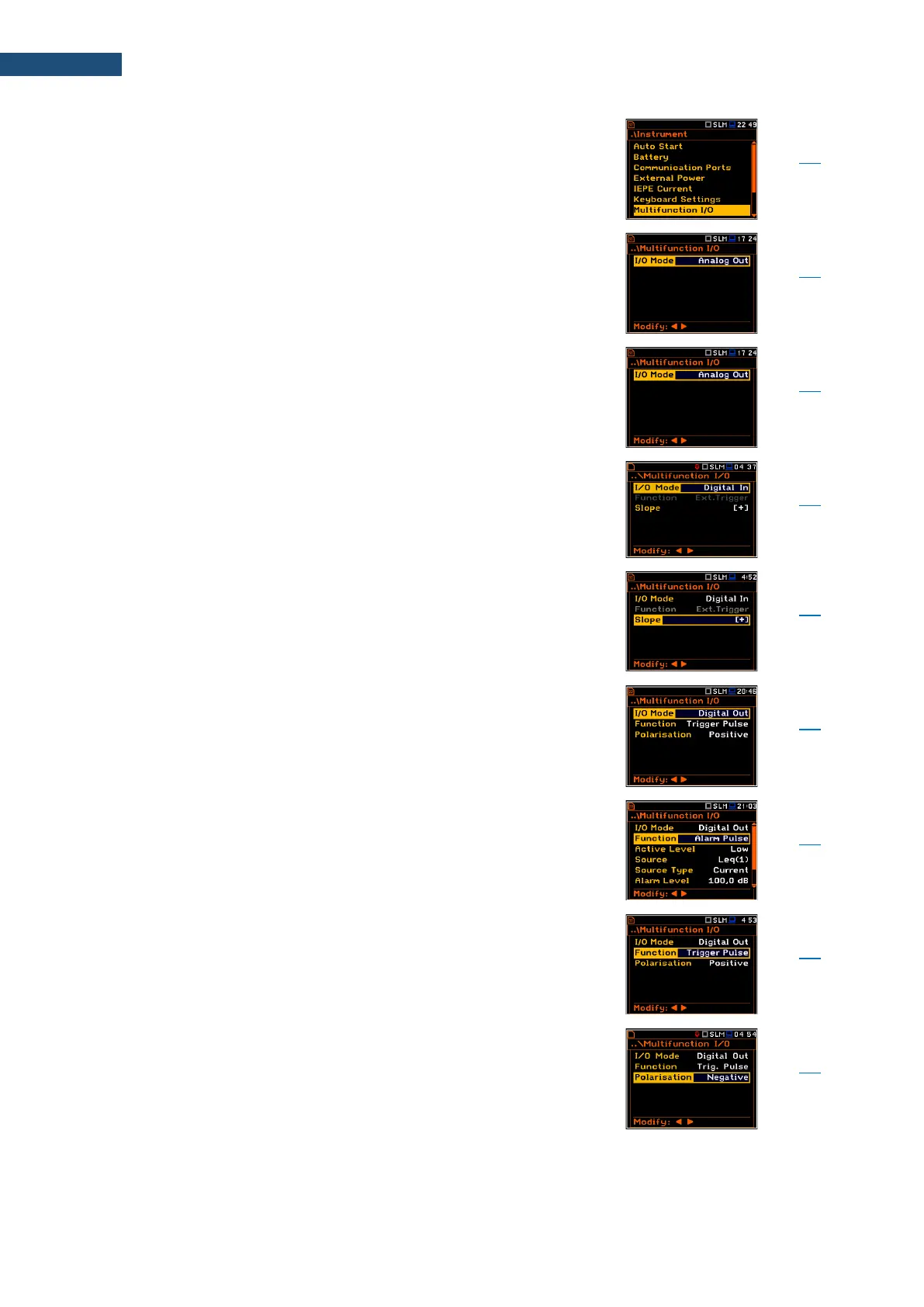Screen that enables configuring the instrument's I/O port
parameters: I/O Mode, Function, Slope, Polarisation,
Active Level, Source, Source Type, Alarm Level, Send
SMS and Send E-Mail. Detailed description of the I/O
port is given in Appendix C.
Mode of the I/O port: Analog Out, Digital In, Digital Out.
Mode of the I/O port when analogue signal is transmitted
from the input of the instrument to its output without any
digital processing (i.e. frequency filtering).
Mode of the I/O port when external digital signal is used
as an external trigger to start measurements. The
instrument is acting in this case as so called “slave
instrument”.
Trigger voltage slope defined for the Digital In I/O mode:
[+] (uprising as default) or [–] (falling).
Mode of the I/O port when digital signal is used for
triggering other “slave instrument(s)” (the instrument is
acting in this case as a “master instrument”), or as a
source of alarm signal.
Functionality of the Digital Out I/O mode: Trigger Pulse
or Alarm Pulse.
Functionality of the Digital Out I/O mode when digital
signal used for triggering other “slave instrument(s)” (the
instrument is acting in this case as a “master
instrument”). One additional parameter is used for this
functionality of the Digital Out I/O mode: Polarisation.
Parameter of the Digital Out I/O mode defining which
polarisation of the signal (Negative or Positive) will be
applied to the output trigger pulse.
